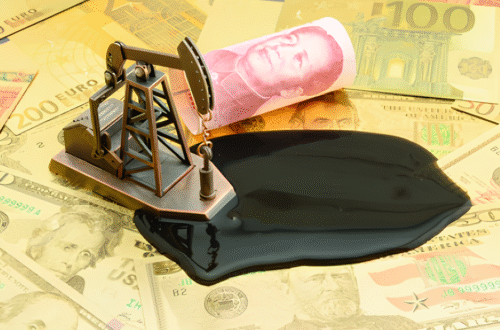
The Fragile Strength of Fiat: Is the U.S. Dollar on Borrowed Time?
Since 1971, the United States has operated under a fiat currency system—a monetary structure not backed by a physical commodity like gold or silver. Instead, the value of the dollar is based entirely on trust: trust in the U.S. government, trust in its economy, and trust in its global influence. This trust has allowed the dollar to become the world’s dominant reserve currency. But that trust is not infinite—and neither is the typical lifespan of fiat currencies.
Understanding Fiat Currency
A fiat currency is government-issued money that isn’t backed by a physical commodity but by the authority of the issuing government. Most modern economies use fiat money because it gives governments greater flexibility to manage economic variables like supply, demand, interest rates, and liquidity.
While fiat currencies can theoretically last indefinitely, history tells a different story. According to various studies, including a historical review by DollarDaze.org and work published by the Cato Institute, the average lifespan of a fiat currency is roughly 27 years, with some lasting as few as a decade and others—like the British pound—surviving over centuries (though with multiple evolutions and resets).
The U.S. dollar, in its pure fiat form, has been around for 54 years, ever since President Richard Nixon officially ended the gold standard in 1971, severing the dollar’s direct convertibility into gold. This places it beyond the average lifespan of historical fiat currencies.
The Problem With Inflation
One of fiat’s greatest vulnerabilities is inflation—the general rise in prices over time that erodes purchasing power. Inflation becomes dangerous when it spirals into hyperinflation, where trust in the currency vanishes almost overnight. Think of Weimar Germany in the 1920s, Zimbabwe in the 2000s, or Venezuela in the 2010s, where citizens needed wheelbarrows of cash to buy basic goods.
While the U.S. is nowhere near those levels, it has experienced persistent inflation since 2021, hitting a 40-year high in 2022 with inflation peaking at 9.1% in June of that year. Though it’s eased since then, prices remain elevated, and public trust has been shaken.
Fiat currencies depend on confidence. If the population or the global community begins to doubt a country’s ability to manage its economy or honor its debts, the value of its currency can collapse rapidly.
Cracks in the Foundation: De-Dollarization Trends
In recent years, nations like China, Russia, Brazil, and Saudi Arabia have begun diversifying away from the U.S. dollar in global trade and reserves. This movement, often referred to as de-dollarization, is driven by geopolitical tensions, concerns about U.S. sanctions, and long-term trust issues in American fiscal discipline.
For example, China and Russia have increasingly settled trade in yuan or ruble, and several oil-producing countries have begun exploring non-dollar transactions. While the U.S. dollar still accounts for about 58% of global foreign exchange reserves (as of 2023), that figure has been slowly declining from over 70% in the late 1990s.
A Debt Spiral in the Making
One of the greatest threats to the dollar today is U.S. federal debt. The current debt-to-GDP ratio stands between 121% and 126.9%, meaning the government owes more than the total value of the entire U.S. economy in a year.
What’s driving this?
- An aging population, leading to ballooning costs for Social Security and Medicare.
- Higher interest rates—since 2022, the Federal Reserve has raised rates significantly to curb inflation, making it more expensive for the government to borrow.
- Persistent budget deficits with no long-term plan for fiscal consolidation.
According to the Congressional Budget Office (CBO), if current trends continue, the federal government may spend 10% of its entire annual budget just on interest payments by 2030. That’s money that doesn’t build roads, educate children, or reduce the principal debt—it simply keeps the lights on.
Even more alarming, the CBO projects the debt-to-GDP ratio could climb to 150% or even 200% in the coming decades. At that point, the sustainability of the debt becomes questionable, especially if trust in the dollar weakens further.
A Delicate Balance—But For How Long?
Right now, the United States is still benefiting from a position of strength:
- The dollar is still the world’s dominant reserve currency.
- U.S. Treasury bonds are still seen as safe investments.
- The American economy remains one of the largest and most innovative.
But none of this is guaranteed forever.
As history shows, fiat currencies don’t tend to fail slowly—they tend to fail suddenly. A loss of confidence can lead to rapid devaluation, capital flight, and societal upheaval. As author Scott Randy Gerber notes, “One day, everything might seem fine, with bread costing $3. The next day, you might need a wheelbarrow full of money to buy it.”
Every President Has Faced the Same Clock
Since 1971, every American president—Republican or Democrat—has grappled with the decline in the dollar’s purchasing power. From Reagan’s debt-driven spending to Obama’s stimulus packages, to Trump’s tax cuts and trade wars, and Biden’s pandemic-era relief and infrastructure bills, each administration has, in effect, managed the long, slow erosion of the dollar’s real value.
Whether these leaders made good or bad decisions can be debated. But the fact remains: the clock is ticking.
Conclusion: Is Change Coming?
Unless serious reforms are made to restore fiscal discipline, reduce inflation, and rebuild global confidence, the U.S. may be headed toward a crisis of confidence in its currency. This doesn’t mean the dollar will vanish tomorrow—but it does mean we should prepare for a future where the current system no longer functions the way it has for the past 50 years.
The question now isn’t whether fiat currency is fragile.
It’s whether we have the courage and foresight to act before the wheelbarrow becomes necessary.




